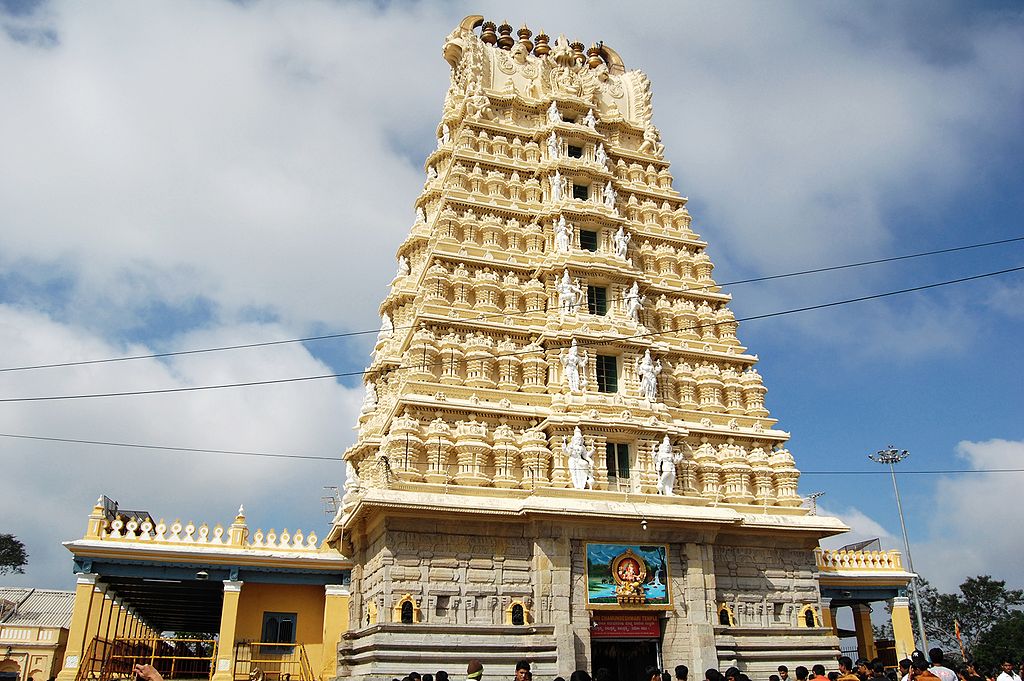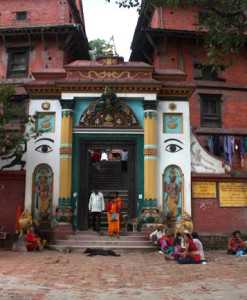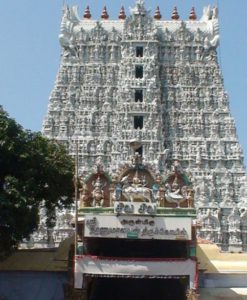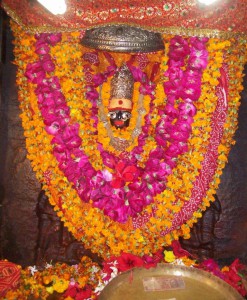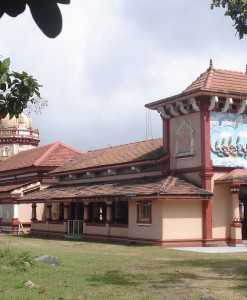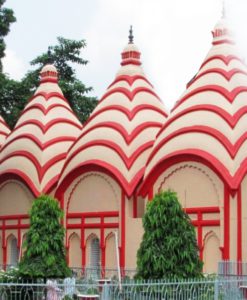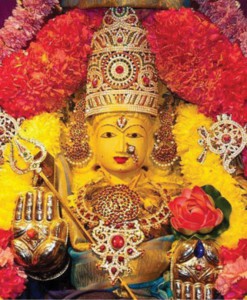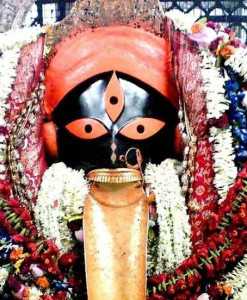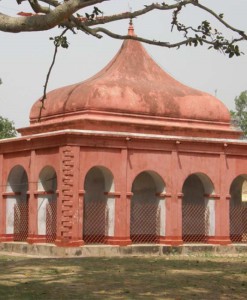No products in the cart.
Chamundeshwari Temple, Mysore
The Chamundeshwari Temple is located on the top of Chamundi Hills about 13 km from the palace city of Mysore in the state of Karnataka in India. The temple was named after Chamundeshwari or Durga, the fierce form of Shakti, a tutelary deity held in reverence for centuries by Mysore Maharajas.
The Chamundeshwari Temple is considered as a Shakti Peetha and one among the 18 Maha Shakti Peethas. It is known asKrouncha Pitham as the region was known in Puranic times as Krouncha Puri. The origin of Shakti Peethas is associated to the mythology of Daksha yaga and Sati’s self immolation.
Shakti Peethas are divine seat of Shakti due to the falling of body parts of the corpse of Sati Devi, when Lord Shiva carried it and wandered in sorrow. There are 51 Shakti Peeth linking to the 51 alphabets in Sanskrit. Each temple have shrines for Shakti and Kalabhairava. The Hair of Sati Devi is said to have fallen here, the Shakti is addressed as Chamundeshwari Devi.
- Temple History
- Architecture
- How To Reach The Temple
- Daily Poojas And Festivals
- Videos
- Additional Information
‘Skanda Purana’ and other ancient texts mention a sacred place called ‘Trimuta Kshetra’ surrounded by eight hills. Lying on the western side is the Chamundi Hills, one among the eight hills. In the earlier days, the Hill was identified as ‘Mahabaladri’ in honour of God Shiva who resides in the ‘Mahabaleswara Temple’. This is the oldest temple on the hills.
In the later days, the hill came to be known as ‘Chamundi Hills’ in honour of the Goddess Chamundi, the chief subject of the ‘Devi Mahathme’. The Goddess is believed to be an incarnation of Parvati, the consort of Lord Shiva. A large number of devotees from all over the country and from abroad visit the temple every year. They believe that the Goddess fulfills their desires and aspirations.
The temple is of a quadrangular structure. Built in Dravidian style, it consists of the Main Doorway, Entrance, Navaranga Hall, Antharala Mantapa, Sanctum Sanctorum, and Prakara. There is a beautiful seven-tier Gopura or pyramidal tower at the entrance and a ‘Vimana’ (small tower) atop the sanctum sanctorum. Atop the ‘Shikara’, the tower at the entrance, are seven golden ‘Kalashas’.
Krishnaraja Wodeyar III repaired the shrine in 1827 A.D and built the present beautiful tower at the entrance (Gopura). Blessed by the Goddess, Krishnaraja Wodeyar, an ardent devotee of the mother Goddess, presented to the temple a ‘Simha-vahana’ (A lion-shaped vehicle) and other animal cars and jewels of value. The cars are used even now for processions on special religious occasions.

The tower at the entrance has a small image of Lord Ganesha on the doorway. The doorway is silver-plated and has the images of the Goddess in different forms. On either side of the doorway are the images of ‘Dwarapalakas’ or door-keepers. As one enters inside, on the right hand side is a small statue of Lord Ganesha, the remover of all obstacles. After a few steps, there is a flagstaff, the footprints of the Goddess and a small statue of Nandi, facing the sanctum sanctorum. On the right side, before approaching the flag staff, there is an image of ‘Anjaneya’ attached to the wall. On either side of this entrance are two Dikpalakas, Nandini and Kamalini.
In the ‘Antharala’ prior to the sacred sanctum sanctorum are the images of Lord Ganesha on the left side and of ‘Bhyrava’ on the right side. To the left of Ganesha, there is a beautiful 6-foot statue of Maharaja Krishnaraja Wodeyar III. He is standing with his hands folded in his religious clothes. On either side of him are his three wives, Ramavilasa, Lakshmivilasa and Krishnavilasa. Their names are carved on the pedestals In the sanctum sanctorum is the stone statue of the Goddess, ‘Mahisha Mardhini.’ Having ‘Ashta Bhujas’ or eight shoulders, she is in a seated posture. According to the local legend, the image was established by sage Markandeya and hence it is said to be very old.
The idol of the Goddess is decorated every day and worshipped by a number of priests. The Mysore Maharajas have donated number of valuable gifts to their family deity.Coconuts, fruits and flowers are offered to the diety.
On top of the sanctum sanctorum, a small tower or ‘Vimana’ is seen. In the ‘Prakara’ or enclosure, behind the sanctum sanctorum, are small images of a few deities, which are also worshipped.
By Road: Chamundi Hills rises to a height of 3,489 feet MSL and is visible from a distance itself while traveling towards Mysore. There is a good motorable road to the top. Besides from Mysore side, there is also a motorable road from its rear side, the Nanjangud side. Bus facilities are available to visit the hills. Karnataka State Road Transport Corporation (KSRTC) operates regular bus services every day for the convenience of pilgrims and others.
By Rail: The nearest Railway Station to the temple is Mysore which is 6 km from the temple
By Air: The Temple can be reached through nearest Mysore Airport(7 km) which is well connected with regular domestic flights to Delhi, Mumbai.
Chamundeshwari Temple, Mysore
This temple Darshana and Pooja Timings: 7.30 a.m to 2 p.m and 3.30 to 6 p.m and 7.30 p.m to 9 p.m.. During this period major part of the Maa Durga rituals are performed. Archana, Aarti and Abhisekham are the daily pujas performed.
Abhisheka Timings : 6 a.m. to 7.30 a.m and 6 p.m to 7.30 p.m | Friday 5 a.m to 6.30 a.m.
Dasoha (free meals) is arranged to devotees daily 12.30 p.m to 2.30 p.m.
Besides the Chamundeswari temple, one can see Mahabaladri, Narayanaswamy temples and Mahishasura and Nandi statues, there are a few other interesting spots on the Chamundi Hills. Among them the Lalith Palace is one. It belongs to the Mysore royal family. The Maharajas were making a short stay in this Palace whenever they visited the hills. Built on the hill-top, it offers an attractive bird’s eye view of Mysore city and far off places. Lalithadri Palace was built during the reign of Krishnaraja Wodeyar IV.

